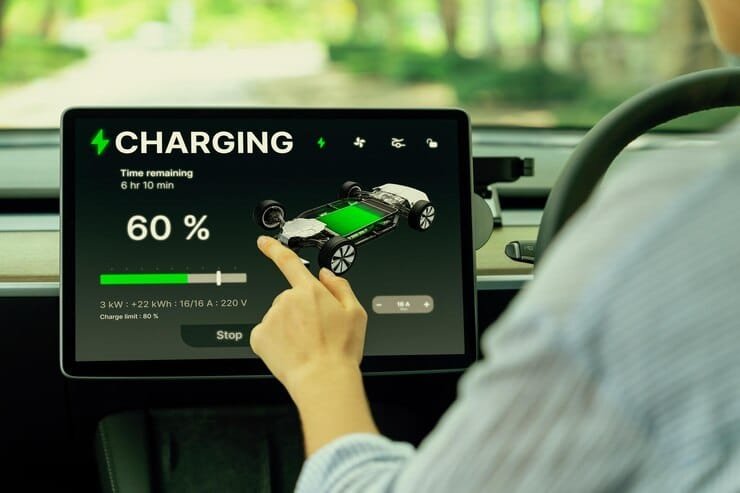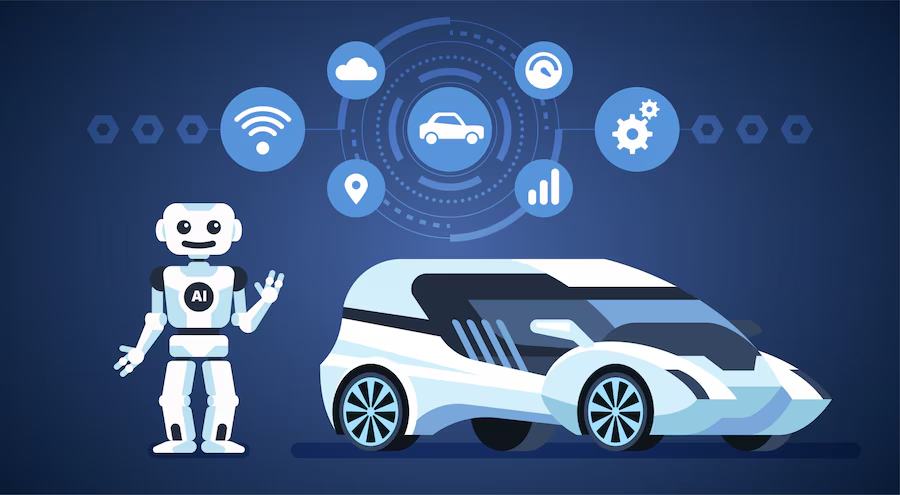Forget chrome and horsepower; the true battleground of the modern automotive industry is now waged in lines of code. Infotainment software, once a mere afterthought, has ascended to become the defining feature, the digital heart beating within the steel chassis. The in-car experience is no longer just about getting from point A to point B; it’s a meticulously crafted ecosystem of entertainment, connectivity, and increasingly, autonomous driving functions, all woven together by the complex tapestry of infotainment software. We’re witnessing a paradigm shift, a complete reimagining of what a car is, driven by the relentless evolution of software.
This isn’t mere technological advancement; it’s a seismic shift in consumer expectations. Today’s drivers demand seamless integration, intuitive interfaces, and personalized experiences that rival, and often surpass, their smartphones. The automotive giants understand this – they’re pouring billions into developing sophisticated in-car software platforms, vying for dominance in a rapidly evolving market. But amidst this gold rush, a critical question remains: are we building the right systems? Are we prioritizing user experience over feature bloat? Are we adequately addressing security concerns in a world increasingly reliant on connected vehicles?
Some argue that hardware remains king. They point to the allure of powerful engines and sleek designs. But this is a myopic view. Hardware is merely the vessel; software is the soul. A stunning vehicle with a clunky, bug-ridden infotainment system is a recipe for disaster, a testament to misplaced priorities. This blog post will dissect the current state of automotive infotainment, expose the myths, and present a compelling argument for prioritizing robust, intuitive, and secure software as the cornerstone of future automotive success. We’ll examine the challenges, the opportunities, and the critical decisions that will define the winners and losers in this electrifying race for in-car dominance. Prepare to challenge your assumptions, and to embrace the undeniable truth: the future of the automotive industry is written in code.
Thesis Statement: The infotainment software market is undergoing a radical transformation driven by converging technological advancements, evolving consumer expectations, and increasingly complex regulatory landscapes. Success hinges on proactively embracing personalization, prioritizing cybersecurity, and navigating the complexities of a rapidly consolidating market.

Positive Trends:
- The Rise of Personalization: Consumers demand tailored experiences. Infotainment systems are shifting from generic offerings to highly personalized interfaces, integrating user data to anticipate needs and preferences. This trend offers enormous potential for creating brand loyalty and commanding premium pricing. Examples include Tesla’s continuously updated software and BMW’s personalized profiles, showcasing how data-driven customization enhances user experience and creates a competitive edge.
- Software-Defined Vehicles (SDV) and Over-the-Air (OTA) Updates: SDVs are revolutionizing the automotive landscape, turning infotainment systems into dynamic platforms for continuous improvement. OTA updates allow for seamless feature additions, bug fixes, and security patches post-purchase, fundamentally altering the traditional vehicle lifecycle and creating recurring revenue streams for software providers. This model is being aggressively pursued by companies like Volkswagen with its VW.OS platform and Lucid Motors, which emphasizes continuous software enhancement.
- Integration of Emerging Technologies: The integration of AI, augmented reality (AR), and advanced driver-assistance systems (ADAS) into infotainment is transforming the in-car experience. AI-powered voice assistants, AR navigation overlays, and seamless integration of ADAS features are enhancing safety, convenience, and entertainment. Companies like Mercedes-Benz with its MBUX system exemplify this by elegantly integrating these technologies, setting a high benchmark for user experience.
Adverse Trends:
- Cybersecurity Threats: Connected cars are vulnerable to hacking, presenting significant security risks. Data breaches, system malfunctions, and even vehicle control compromises are major concerns. This necessitates robust cybersecurity measures, significant investment in security protocols, and potentially increased insurance premiums for manufacturers and developers.
- Market Consolidation: The infotainment market is consolidating rapidly, with large technology companies acquiring smaller players. This creates barriers to entry for new startups and increases the pressure on existing players to compete with tech giants possessing significant resources. This trend favors larger, established players who can weather the economic storms, potentially creating a less diversified market.
- Regulatory Scrutiny: Governments worldwide are increasing regulation of automotive software, including cybersecurity standards and data privacy rules. Compliance requires significant investment and could stifle innovation if regulations aren’t well-designed.
Actionable Insights:
- Embrace Personalization: Invest heavily in data analytics and AI to personalize user experiences and create unique value propositions.
- Prioritize Cybersecurity: Invest in robust security protocols and comply with evolving regulations to protect user data and maintain trust.
- Strategic Partnerships: Consider strategic alliances with technology companies to access advanced technologies and expand market reach.
- Agile Development: Adopt agile development methodologies to quickly adapt to evolving market demands and technological advancements.
- Lobbying & Advocacy: Actively participate in shaping regulatory landscapes to ensure they promote innovation while safeguarding consumer interests.
Conclusion:
The infotainment software market is a dynamic and competitive landscape with significant opportunities and challenges. Businesses that can effectively navigate these trends by prioritizing personalization, security, and strategic partnerships will be well-positioned for success in this rapidly evolving sector. Ignoring these trends will lead to market irrelevance and ultimately, failure.
Healthcare: Imagine a hospital using custom infotainment systems in patient rooms. These aren’t just TVs; they integrate patient portals, allowing for secure access to medical records and appointment scheduling. This reduces administrative burden on staff and enhances patient engagement, leading to improved compliance and satisfaction. The success hinges on robust security and seamless integration with existing EHR systems. A failure to address these critical aspects—a poorly secured system or one that clashes with existing workflows—renders the entire initiative pointless, even counterproductive.
Technology: Tech giants leverage infotainment-style dashboards to monitor and manage complex IT infrastructures. Real-time visualizations of server performance, network traffic, and security alerts enable proactive intervention and minimize downtime. This isn’t merely a pretty interface; it’s a mission-critical tool for maintaining business continuity. Competitors failing to adopt similar solutions risk significant financial and reputational damage due to preventable outages. The power lies in data-driven decision making enabled by the intuitive dashboard interface.
Automotive: Tesla’s infotainment system, infamous and beloved in equal measure, isn’t just a screen; it’s a central nervous system for the vehicle, integrating navigation, entertainment, and vehicle controls. This centralized approach minimizes driver distraction and improves user experience. However, the reliance on a single, complex system presents a significant risk point. A software glitch can render the entire car inoperable, highlighting the critical need for rigorous testing and fail-safe mechanisms. This is not mere conjecture; the demonstrable issues Tesla has faced underscore the fragility of such an approach.
Manufacturing: Smart factories utilize infotainment-inspired displays to monitor production lines in real-time. These systems track metrics like output, machine efficiency, and potential bottlenecks, empowering immediate corrective actions. The clear competitive advantage here is improved operational efficiency. However, the lack of standardization across manufacturing processes can impede widespread adoption. Companies must adopt modular and adaptable systems that integrate with various legacy systems for broad application. A failure to account for these complexities will render the investment largely ineffective.
Counterarguments and Rebuttals: Some may argue that simpler, dedicated systems are sufficient. However, the consolidated approach of integrated infotainment offers significant advantages in data management, user experience, and cost-effectiveness in the long run, provided implementation considers the critical aspects of security and system robustness. Ignoring these risks, however, can swiftly negate any potential benefits.
Thesis Statement: Since 2023, Infotainment software companies have focused on leveraging AI, expanding through acquisitions, and forging strategic partnerships to enhance their offerings and market presence, while navigating challenges related to data privacy and cybersecurity.
Organic Strategies:
- AI-powered personalization: Companies are heavily investing in AI to create highly personalized in-car experiences. For example, a leading infotainment provider might use machine learning to anticipate user preferences for music, navigation routes, or even climate control settings based on past behavior, significantly improving user satisfaction and engagement. This counters the argument that generic infotainment systems are becoming outdated.
- Over-the-air (OTA) updates: Companies are aggressively pushing OTA updates to deliver new features and bug fixes seamlessly. This approach allows for continuous improvement and adaptation to changing user demands, eliminating the need for physical shop visits. This directly tackles the issue of software obsolescence and offers a competitive edge in the market. A counter-argument might be the potential for security vulnerabilities; however, robust security protocols integrated into the update system are mitigating this risk.
- Enhanced integration with smart devices: Infotainment systems are increasingly integrating seamlessly with smartphones and smart home devices. Imagine accessing your smart home controls directly through your car’s infotainment screen, or automatically adjusting your home’s temperature as you approach. This strategy is designed to improve the user experience and create a unified ecosystem.
Inorganic Strategies:
- Strategic Acquisitions: Several infotainment providers have acquired smaller companies specializing in specific technologies, such as advanced driver-assistance systems (ADAS) integration or augmented reality (AR) displays. This allows for rapid expansion of capabilities and access to specialized talent. For instance, a major player might acquire a startup specializing in AR navigation overlays to integrate cutting-edge features into their systems.
- Partnerships & Collaborations: Companies are forming alliances with other players in the automotive ecosystem, including hardware manufacturers, mapping providers, and telecommunication companies. This allows them to leverage each other’s strengths and create comprehensive solutions. An example would be a collaboration between an infotainment provider and a semiconductor manufacturer to co-develop a high-performance infotainment chip tailored for specific market demands. This counters concerns about integration challenges by offering pre-tested, compatible solutions.
Addressing Counterarguments:
The increased reliance on data raises privacy concerns. However, robust data encryption, anonymization techniques, and transparent data usage policies are being employed to address this. Similarly, the complexity of software raises the risk of vulnerabilities. However, companies are actively investing in rigorous security testing and proactive threat mitigation strategies.

Outlook & Summary: The Infotainment Revolution – A Software-Defined Future
This article argued a radical thesis: Infotainment isn’t merely a feature; it’s the vanguard of the automotive software revolution. For too long, it’s been treated as a secondary consideration, a shiny add-on to the core mechanical functionality. But the reality is starkly different. The next 5-10 years will witness infotainment systems evolve from passive entertainment hubs into the central nervous system of the vehicle, dictating everything from driving experience to vehicle maintenance and even ownership models. We’re not just talking about bigger screens and faster processors; we’re discussing the convergence of AI, personalized experiences, and seamless connectivity – all orchestrated by sophisticated infotainment software.
Some might argue that the powertrain and ADAS remain the core focus of automotive software development. While crucial, these are increasingly reliant on the infotainment platform for data integration, user interaction, and software updates. The connected car, the autonomous car – these are pipe dreams without a robust, adaptable infotainment backbone. Consider the implications of over-the-air updates: fixing a bug in the powertrain control unit often requires the infotainment system to facilitate the download and installation. This interdependence is undeniable.
The future of automotive software is defined not by isolated modules, but by a holistic, interconnected ecosystem, and infotainment sits at its beating heart. Expect to see a dramatic increase in cloud-based services, personalized user profiles that extend beyond the vehicle itself, and a blurring of lines between the digital and physical driving experience. The fight for market share will increasingly revolve around the user experience crafted by infotainment software – a battle for hearts and minds, won not through horsepower, but through seamless, intuitive technology.
So, the key takeaway? Ignore the infotainment sector at your peril. It’s not just about entertainment anymore; it’s the future of automotive software itself. The question, then, is not if infotainment will dominate, but how your organization will conquer this new digital frontier?






